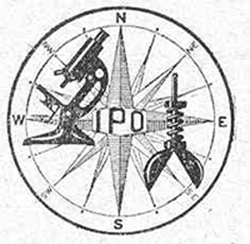This paper is to be considered as a first contribution to the special distribution regarding marine sea-weed of the Parana coast (Caiobá). We shall consider three coastal types: a) Those of the rocky coast subject to the action of waves. b) Those of the rocky coast but nevertheless more or less protected; and, c) Those of the marshy ground. "Within the proposed plan, the first type is divided into two zones: 1) The Splash Zone located above the average limit of the tide (fig. 2 n.º 1). Foreign authors call this zone also the Spritzone. 2) The Intertidal Zone (Ressaca), situated between the average of the levels of the tide. Foreign authors named this zone the Gezeitenzone (fig. 2 n.º 2). The first named of the two above zones contains only one species of sead-weed, Lyngbya confervoides and at least two species of molluks of the Littorina genus. The second zone is the richer one of the two in animals as well as in sea-weed and is especially characterized in Caiobá by means of the following sea-weeds: Levringia sp., Chaetomorpha media and Centroceras clavulatum. These are to be found in the upper part together with balanoids (craca) and Mytilus perna (marisco). Pterosiphonia pennata, Hypnea musciformis, and Bryocladia thyrsigera are prevalent in the lower part. Another three secondary types are to be found, however, this depending upon local conditions of the rocks. This succession of Littorina, balanoides and Mytilus is the same as that existing in the Southern part of Africa, as can be noted from works published by Stephenson (11,12) and various others of his collaborators. The second type also populates two zones, being the second one the richer and it also provides a grater variety. Here we find a group of sea-weeds and among them the following dominate Callithamnion, Laurencia papulosa, Gigartina Teedii and Sargassum cymosum. It is believed that there exists another zone below the inferior limit of the tide and the same presents us the species Rhodymenia Palmetta, Plocamium brasiliensis and Spatoglossum Schroederi. A quick enumeration of the sea-weeds living in the marshy ground is made.
